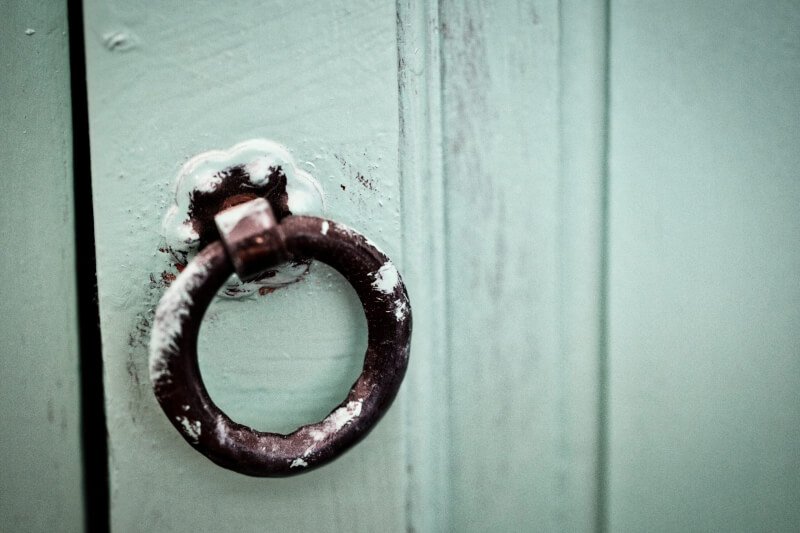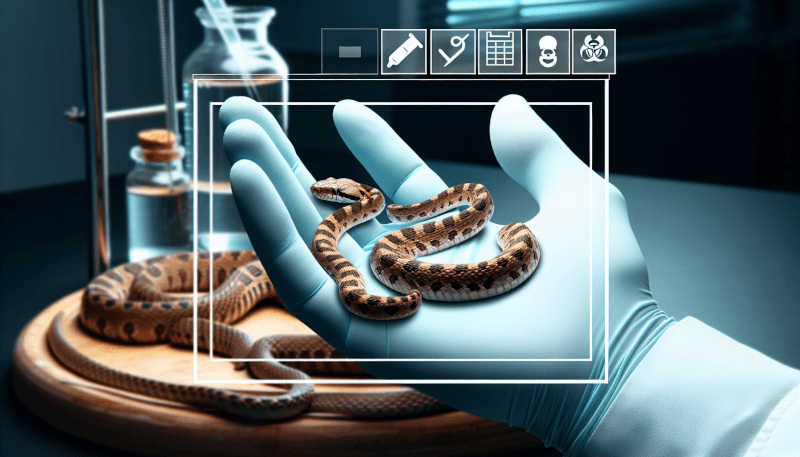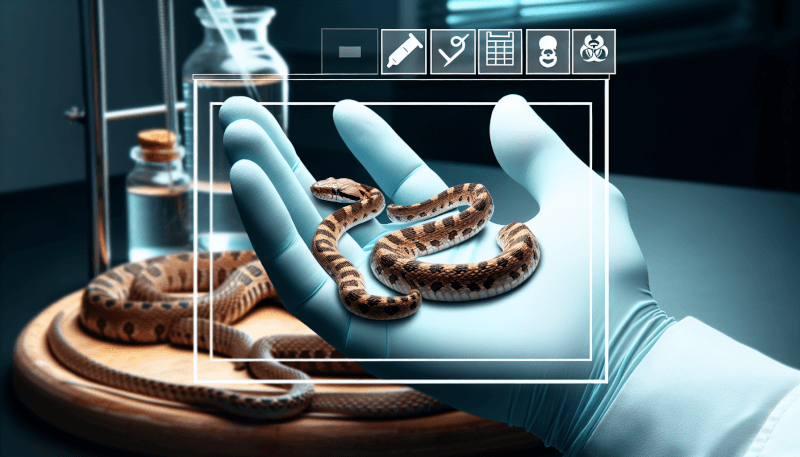In this informative article, you will discover useful tips on how to safely handle venomous snakes. Whether you find yourself encountering these creatures in the wild or you work in the field of herpetology, it’s crucial to know the proper techniques to ensure your safety as well as the snake’s well-being. By following simple guidelines and understanding their behavior, you can confidently navigate encounters with venomous snakes, allowing for a harmonious coexistence between humans and these fascinating reptiles.

Choosing the Right Equipment
Selecting a Snake Hook
When it comes to safely handling venomous snakes, choosing the right equipment is essential. One of the most important tools in your arsenal is a snake hook. A snake hook is a long-handled device with a gentle, curved end that allows you to safely manipulate snakes without putting yourself at risk. Look for a hook with a sturdy handle and a smooth, rounded tip. It’s important to choose a hook that is long enough to keep you at a safe distance from the snake while still giving you enough control to handle it effectively.
Using Proper Snake Gloves
Another essential piece of equipment for handling venomous snakes is a pair of snake gloves. These gloves are specially designed to protect your hands from snake bites while still allowing you to maintain a good grip on the snake. Look for gloves that are made from thick, puncture-resistant material such as leather or Kevlar. They should fit snugly without restricting your movement. Remember to always wear your gloves when handling venomous snakes to minimize the risk of injury.
Identifying Venomous Snakes
Recognizing Venomous Snake Species
Before attempting to handle any snake, it’s crucial to be able to identify venomous snake species. Familiarize yourself with the characteristics of venomous snakes in your area, such as their distinctive color patterns, heads shape, and size. Keep in mind that venomous snakes can vary greatly in appearance, so don’t rely solely on one characteristic to determine whether a snake is venomous or not. Take the time to educate yourself about the venomous snakes in your region to ensure you can accurately identify them when encountered.
Understanding Snake Behaviors
Identifying venomous snakes is just one part of the equation; understanding their behaviors is equally important. Venomous snakes tend to be more defensive and aggressive compared to non-venomous snakes. They may exhibit signs of aggression, such as hissing, rattling their tails, or striking at perceived threats. Recognizing these behaviors can help you gauge the snake’s temperament and adjust your approach accordingly. Understanding the behavior of venomous snakes will help you handle them safely and minimize the chances of a dangerous encounter.

Maintaining Distance
Keeping a Safe Distance
When handling venomous snakes, maintaining a safe distance is key. Always keep a safe distance from the snake, giving it ample space and not crowding or cornering it. Stepping back and maintaining a distance of at least several feet will greatly reduce the risk of getting bitten. Remember that snakes can strike from a surprisingly long distance, so it’s important to respect their personal space and stay out of harm’s way.
Avoiding Quick Movements
Venomous snakes can be triggered by sudden, fast movements. To avoid alarming or agitating the snake, it’s crucial to move slowly and deliberately when in its presence. Sudden movements may startle the snake and cause it to go into defensive mode, increasing the chance of a bite. By moving slowly and calmly, you’ll create a calmer environment and minimize the snake’s stress level, making it less likely to strike.
Preparing for an Encounter
Knowing Local Snake Species
Before venturing into an area known for venomous snakes, it’s important to educate yourself about the local snake species that inhabit the region. Different regions may have different snake populations, and knowing which species are common in your area will help you better prepare for potential encounters. Study their habits, preferred habitats, and typical behavior patterns. This knowledge will allow you to make informed decisions and take appropriate precautions when in their territory.
Determining Snakebite First Aid Kit
Preparing for an encounter with a venomous snake also involves having a snakebite first aid kit readily available. Your first aid kit should include items such as sterile gauze, antiseptic wipes, bandages, a snakebite suction extractor, and a compact snakebite reference guide. Familiarize yourself with the contents of the kit and how to use them properly. Having a well-equipped first aid kit on hand will enable you to respond quickly and effectively in the event of a snakebite.

Approaching the Snake
Be Aware of Surroundings
Approaching a venomous snake requires a keen awareness of your surroundings. Take a moment to assess the area for potential dangers or obstacles that could impede your movement. Look for any nearby hiding spots or potential escape routes for the snake. By being aware of your surroundings, you can plan your approach accordingly, ensuring a safer and more controlled interaction with the snake.
Moving Slowly and Steadily
When you approach a venomous snake, it’s crucial to move slowly and steadily. Sudden movements can startle the snake and trigger an aggressive response. Maintain a calm and relaxed demeanor as you approach, making deliberate and controlled movements. By moving slowly and steadily, you’ll convey a sense of confidence and less of a threat to the snake, reducing the likelihood of it feeling the need to defend itself.
Capturing the Snake
Keeping Hands Below the Snake’s Head
Once you are close enough to the snake, it’s important to position your hands correctly to minimize the risk of a bite. Always keep your hands below the snake’s head, as this is the most dangerous part of its body. By keeping your hands away from the snake’s head, you greatly reduce the chances of getting bitten. Remember to maintain a firm grip but avoid squeezing or applying excessive pressure that could stress or harm the snake.
Using a Snake Handling Tube
A snake handling tube is a useful tool for safely capturing venomous snakes. It is a long, transparent tube with a secure lid that allows you to control the snake’s movement without direct contact. When using a snake handling tube, carefully guide the snake into the tube, ensuring that its head is securely contained. The transparent material of the tube allows you to monitor the snake’s behavior and provides a safe and secure environment for transport.

Handling Techniques
Stabilizing the Snake’s Head
When handling venomous snakes, it’s crucial to stabilize the snake’s head to minimize the risk of a bite. The head is where the fangs and venom glands are located, so keeping it immobilized is of utmost importance. To achieve this, use your hand or a snake hook to gently secure the snake’s head, ensuring that it cannot move or strike. By stabilizing the snake’s head, you gain control over its movements and greatly reduce the chance of being bitten.
Avoiding Aggressive Behavior
While handling venomous snakes, it’s imperative to maintain a calm and composed demeanor. Avoid any sudden or aggressive movements that could provoke the snake. Stay relaxed and in control, as the snake will sense your energy and react accordingly. By remaining calm, you create a more peaceful and secure environment for both you and the snake, minimizing the likelihood of any negative encounters.
Transporting the Snake
Using a Secure Container
Transporting a venomous snake safely requires the use of a secure container. Choose a sturdy container that is escape-proof and sized appropriately for the snake you’re handling. It’s important to ensure that the container has a secure lid that cannot be easily opened by the snake, as well as any ventilation holes necessary to maintain airflow. Secure the lid tightly to prevent any accidental escapes during transportation.
Ensuring Proper Ventilation
Ventilation is a crucial aspect of transporting venomous snakes. Make sure the container you use for transportation has adequate ventilation holes to allow for proper airflow. These holes will ensure that the snake has enough oxygen while in transit. However, be careful not to create holes that are large enough for the snake to escape through. Balancing ventilation and security is essential to keep both you and the snake safe during transportation.

Releasing the Snake
Returning It to Its Natural Habitat
After handling a venomous snake, it’s important to release it safely back into its natural habitat. Choose a suitable location away from human activity where the snake can resume its normal behavior without posing a threat to anyone. Be mindful of the environment you release the snake into, ensuring it has access to food, water, and suitable shelter. By returning the snake to its natural habitat, you contribute to the preservation of its species and maintain a healthy ecosystem.
Avoiding Direct Contact
When releasing a venomous snake, it’s crucial to avoid direct contact. Use a snake handling tube or other suitable tools to gently guide the snake out of its container and into the desired location. Minimize any unnecessary handling or interaction to reduce stress on the snake and minimize the chances of a defensive response. Maintain a safe distance as the snake exits the container, allowing it to adjust to its surroundings without feeling threatened.
Seeking Professional Help
Knowing When to Call an Expert
While it’s admirable to want to handle venomous snakes yourself, there are times when it’s best to seek professional help. If you encounter a venomous snake and are unsure of how to safely handle the situation, don’t hesitate to call a professional snake handler or herpetologist. They have the expertise and experience to handle venomous snakes safely and can provide guidance or assistance in managing the situation.
Contacting Local Authorities
If you encounter a venomous snake in a residential or public area, it’s crucial to contact local authorities. This ensures that trained professionals with the necessary equipment and expertise are dispatched to handle the situation safely. Don’t attempt to handle the snake yourself in such scenarios, as it can put yourself and others at risk. Promptly notifying the appropriate authorities will help ensure a safe and effective resolution to the situation.
Remember, handling venomous snakes is a task that requires knowledge, skill, and caution. By choosing the right equipment, understanding venomous snake identification and behavior, maintaining distance, and following proper handling techniques, you can minimize the risks associated with venomous snake encounters. Stay informed, stay safe, and always prioritize the well-being of both yourself and the snakes you encounter.


